Oxford’s medical history is a fascinating tapestry of innovation, ethical dilemmas, and societal upheaval. From the devastating grip of medieval epidemics to the tensions surrounding anatomical studies, this walking tour promises to unravel the city’s complex and often unsettling past. Guided by knowledgeable experts, attendees will explore the delicate balance between public health and individual rights, while also discovering Oxford’s legacy as a center of groundbreaking medical research. Whether you’re a history buff or simply curious about the darker corners of the city’s past, this thought-provoking experience is sure to leave a lasting impression.
Key Points
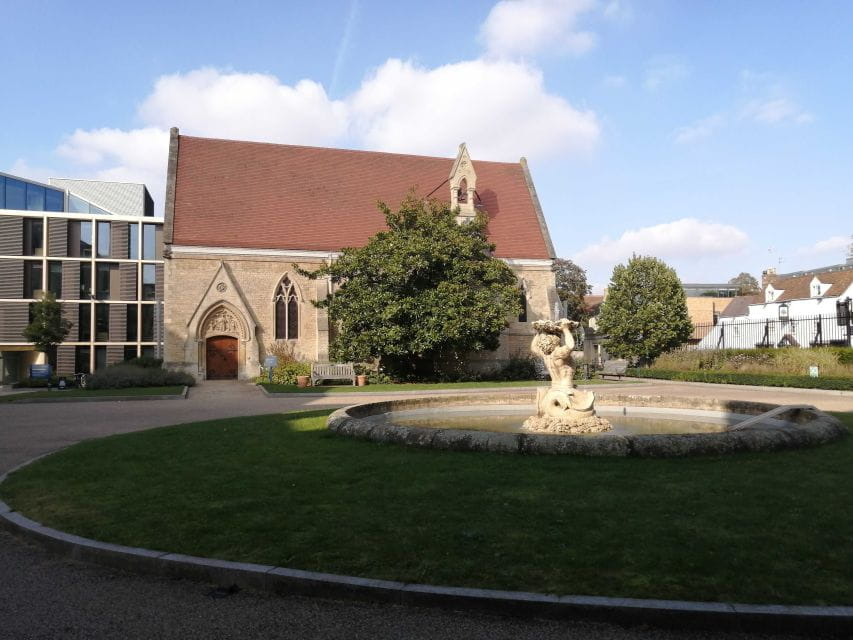
- The tour explores Oxford’s history of devastating epidemic diseases, such as the Black Death, and the city’s efforts to understand and contain these deadly illnesses.
- Anatomical studies conducted at the University despite religious and social taboos, leading to debates over the moral and legal implications of using cadavers for research and instruction.
- The tour examines the complex and contentious issue of balancing the interests of public health with the concerns of individual rights and cultural/religious beliefs.
- Oxford’s storied history as a center of medical research, featuring groundbreaking discoveries and innovations that have shaped modern medicine.
- The tour is led by knowledgeable guides from Uncomfortable Oxford, providing a thought-provoking and insightful exploration of the city’s medical landscape.
Epidemic Disease in Medieval Oxford

During the medieval period, Oxford’s close-knit community grappled with devastating outbreaks of epidemic disease, forever shaping the city’s history and its approach to public health.
The tour explores how plagues like the Black Death ravaged the city, killing thousands and creating lasting social upheaval. Visitors will learn about the primitive medical understanding at the time, and how the University’s scholars and physicians struggled to contain the spread of deadly illnesses.
From quarantine measures to the emergence of anatomical study, the tour delves into how these crises spurred advancements in the field of medicine, while also raising troubling questions about power, inequality, and individual rights.
It’s a captivating look at Oxford’s uncomfortable past.
If you're enjoying exploring Oxford on foot, you'll love these other walking tours we recommend
Anatomy Dissections at the University
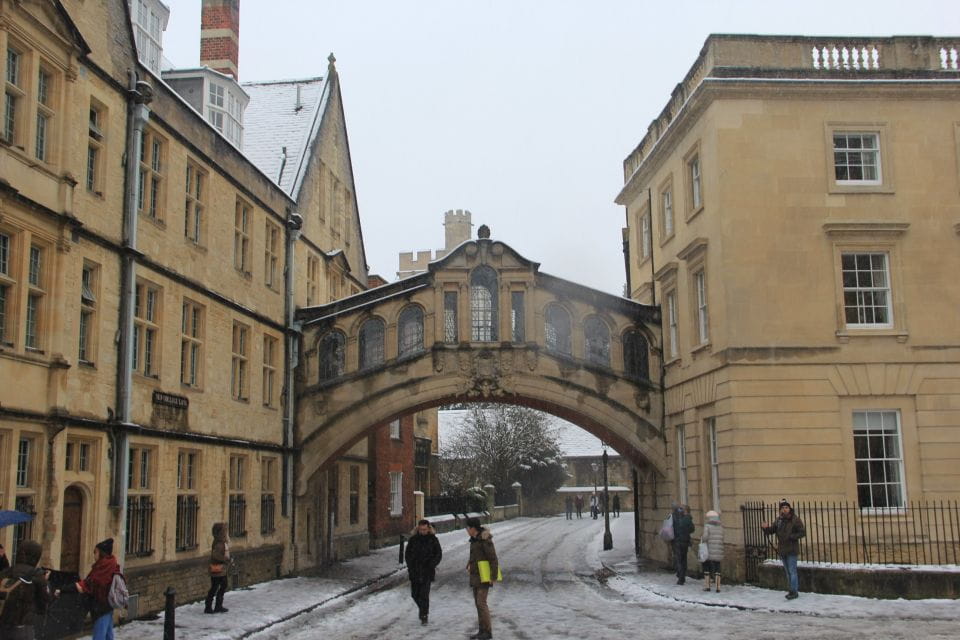
The University of Oxford has a long and complex history with anatomy dissections, which have played a pivotal role in advancing medical understanding but also raised ethical concerns.
Scholars have conducted anatomical studies on campus since the 13th century, although the practice was often shrouded in secrecy and controversy due to religious and social taboos surrounding the dead body.
Over the centuries, tensions arose between the University’s pursuit of medical knowledge and the public’s discomfort with the dissection of human remains, reflecting the uneasy relationship between science and society.
Dissections became a crucial component of medical education, allowing students to gain a deeper understanding of the human form. Yet, the practice remained a source of unease, as debates persisted over the moral and legal implications of using cadavers for research and instruction.
Tensions Between Public Health and Rights
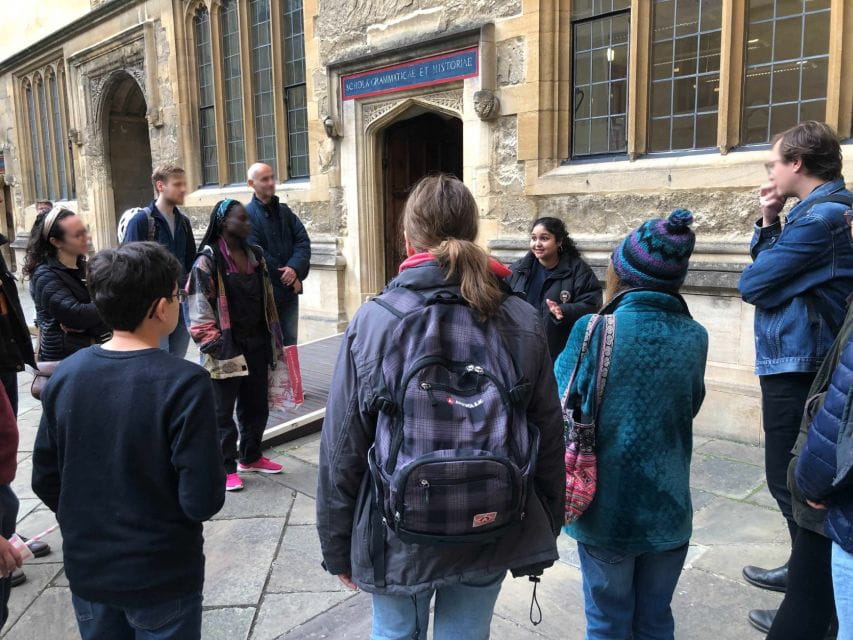
As the practice of anatomy dissection became integral to medical education at Oxford, it also sparked ongoing debates over the tensions between public health interests and individual rights. Balancing the need for advancing scientific understanding with the public’s discomfort and ethical concerns proved to be a complex and contentious issue that the University grappled with for centuries.
| Interests of Public Health | Concerns of Individual Rights |
|---|---|
| Accessing bodies for research and education | Respecting the dignity and wishes of the deceased |
| Preventing the spread of disease through medical advancement | Preserving cultural/religious beliefs around death and burial |
| Promoting scientific progress to improve healthcare | Maintaining privacy and autonomy over one’s own remains |
| Protecting the greater good of the community | Upholding individual freedoms and liberties |
| Advancing the field of medicine through new discoveries | Avoiding exploitation or commodification of the human body |
Medical Research at the University
Oxford’s storied history as a center of medical research spans centuries, with groundbreaking discoveries and innovations that have profoundly shaped the field of modern medicine.
From pioneering work in anatomy and physiology to advancements in clinical practice and public health, the University has long been at the forefront of medical progress, driven by the relentless pursuit of knowledge and a commitment to addressing the pressing health challenges of each era.
Researchers at Oxford have made pivotal contributions to fields like immunology, neuroscience, and oncology, pushing the boundaries of scientific understanding and developing life-saving treatments.
The University’s rich tradition of medical innovation continues today, as a new generation of scholars builds upon this legacy, driving forward the frontiers of human health and well-being.
Tour Guides and Souvenir Information
Accompanying visitors on the Uncomfortable™ walking tour are expert guides from Uncomfortable Oxford, decked out in bright blue vests and toting the company’s branded tote bags, ready to explore the capital’s discomforting medical past. These knowledgeable individuals lead guests through the city’s streets, sharing captivating tales of epidemics, anatomy dissections, and the complex history of medical research at the University. As an added memento, each participant receives a free Uncomfortable Oxford souvenir sticker, a tangible reminder of the thought-provoking insights gleaned during the 1.5-hour exploration. The tour also provides attendees with a reading list compiled by University experts, allowing them to delve deeper into the uncomfortable truths that shaped Oxford’s medical landscape.
| Item | Description |
|---|---|
| Tour Guide | Expert from Uncomfortable Oxford |
| Attire | Bright blue vest |
| Accessory | Branded tote bag |
| Souvenir | Free Uncomfortable Oxford sticker |
| Reading List | Compiled by University experts |
Fascinated by Oxford's past? More historical tours we've covered
- Reformation Oxford Christian History Tour Private Groups
- Oxford’s Architectural Gems: A Historic Walk
- Oxford: Quirky Self-Guided Smartphone Heritage Walks
- University and City Historical and Architectural Walking Tour
- Oxford: History of Medicine – an Uncomfortable™ Walking Tour
- Oxford: Private City Tour & University Historical Highlights
Meeting Point and Directions
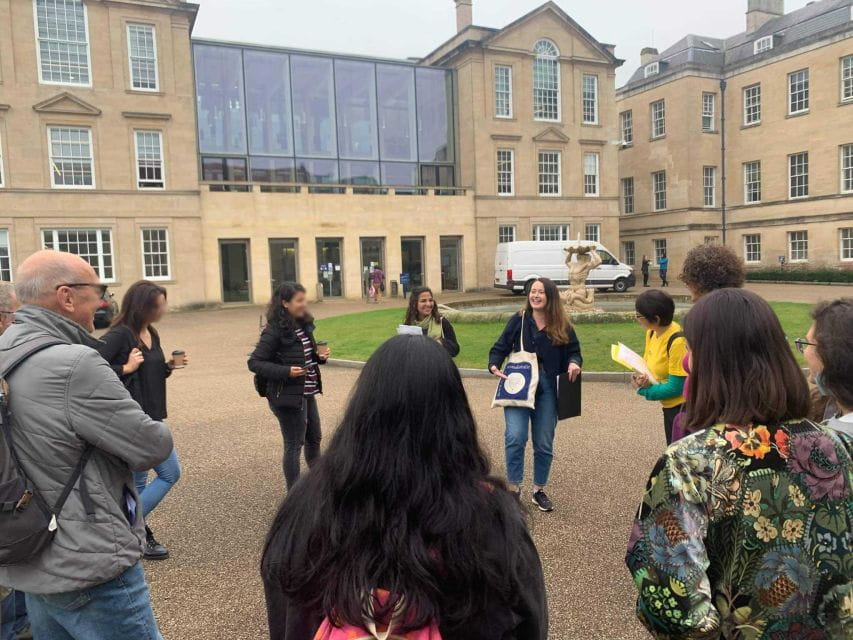
The meeting point for the Uncomfortable™ walking tour is under the iconic Bridge of Sighs, also known as the Hertford Bridge, where the knowledgeable guides congregate in their vibrant blue vests and carry the company’s distinctive tote bags.
This distinctive landmark serves as a convenient and easily recognizable starting point for the tour, which explores the complex and often unsettling history of medicine in Oxford.
Visitors will find the tour guides to be friendly and approachable, eager to share their expertise and provide a thought-provoking exploration of the city’s medical past.
Whether you’re a local or a visitor, this tour offers a unique and eye-opening perspective on Oxford’s history.
Tour Duration and Distance
The 1.5-hour walking tour covers approximately 2 kilometers, guiding visitors through Oxford’s rich and often unsettling medical history.
Despite the mildly uneven cobblestones and busy streets, particularly on weekends, the tour remains wheelchair accessible, ensuring an inclusive exploration of this compelling and thought-provoking subject matter.
Attendees will learn about the complex legacy of disease, anatomy dissections, and medical research at the University, while also discussing the tensions between public health policies and individual rights.
The tour’s engaging expert guide and the free Uncomfortable Oxford™ souvenir sticker help make this a truly memorable and impactful experience for all who embark on this eye-opening journey through Oxford’s past.
Weather and Accessibility Considerations
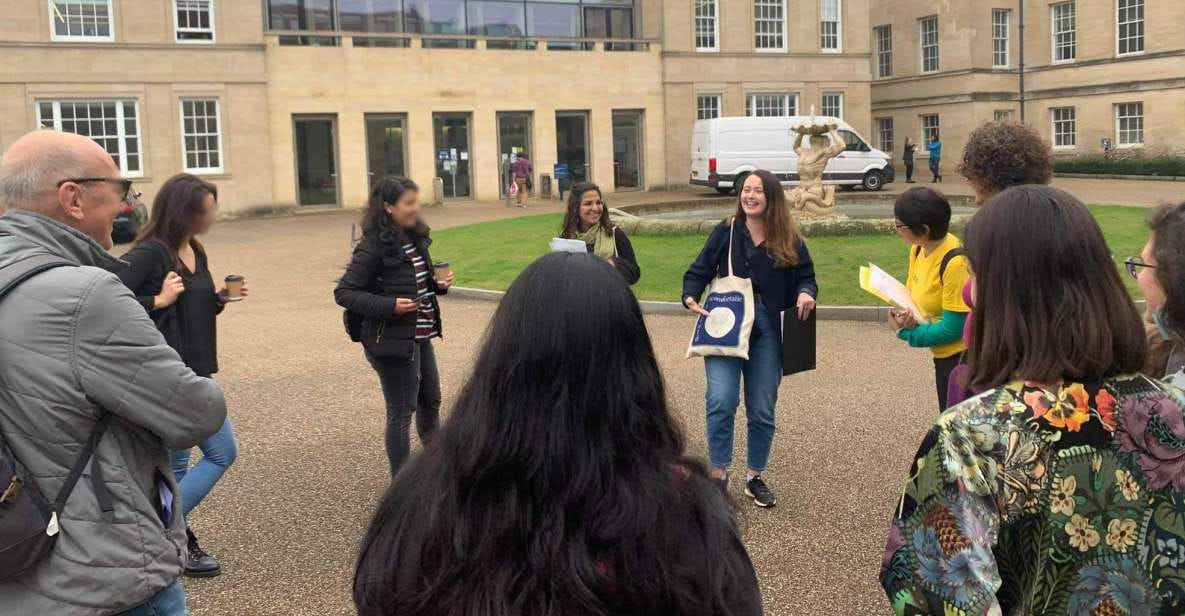
Rain or shine, the tour presses on, as the expert guide ensures attendees stay comfortable throughout the journey, rain ponchos and umbrellas at the ready. Wheelchair users can also look forward to a smooth experience, with the tour’s mild uneven cobblestones and bustling weekend streets posing little hindrance to accessibility.
The tour’s thoughtful consideration for all participants is evident in three key ways:
- Weatherproofing – Umbrellas and ponchos are available to keep everyone dry, no matter the weather.
- Wheelchair accessibility – The route avoids major obstacles, ensuring a comfortable and inclusive experience.
- Knowledgeable guidance – The expert tour leader expertly navigates the group through the historic streets, providing insightful commentary every step of the way.
Frequently Asked Questions
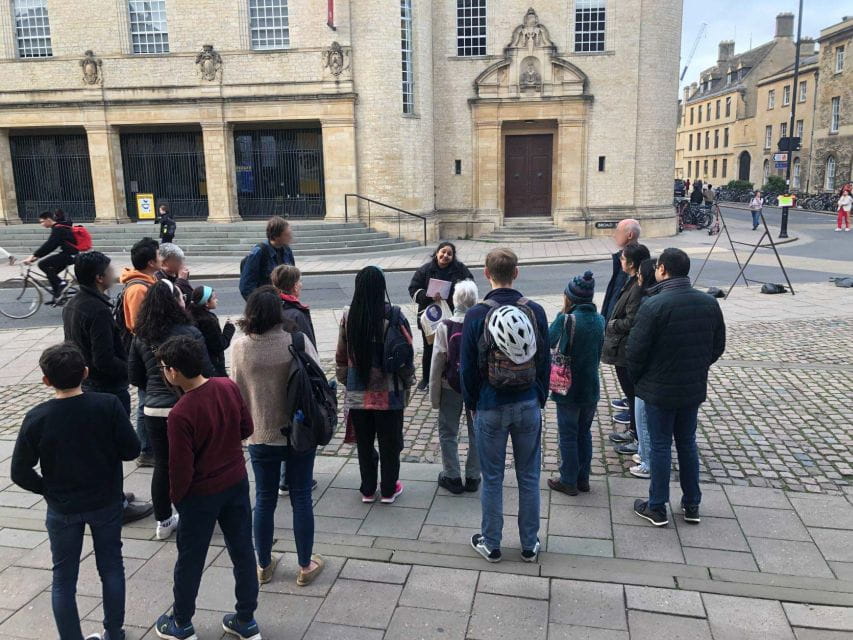
Can I Bring My Pet on the Tour?
Unfortunately, pets are not allowed on this walking tour. The guide wants to ensure all participants can fully engage with the history and discussion without distraction. The tour experience is best suited for humans only.
Do You Offer Discounts for Students or Seniors?
Yes, Uncomfortable Oxford offers discounted tickets for students and seniors. These reduced-price tickets make the informative and engaging tour more accessible to a wider audience. Simply bring valid ID to receive the special rate.
Is There a Restroom Available During the Tour?
Yes, there are public restrooms available during the tour. The guide will point out convenient restroom locations along the route so participants can take necessary breaks throughout the engaging and informative 1.5-hour walking exploration.
Can I Take Photographs During the Tour?
Absolutely! Participants are encouraged to take photographs during the tour to capture the historic sights and share their experience. The guide will even provide tips on the best spots for that perfect shot.
Is the Tour Available in Languages Other Than English?
The tour is currently only available in English. While multilingual tours aren’t offered, the enthusiastic guides provide an engaging and informative experience for all participants, regardless of their native language. The university experts’ reading list is a helpful takeaway.
Recap
The Oxford: History of Medicine – an Uncomfortable™ Walking Tour offers a captivating exploration of the city’s complex medical legacy.
Visitors will explore the triumphs and tragedies that have shaped Oxford’s remarkable healthcare journey, from devastating pandemics to groundbreaking research.
Led by knowledgeable guides, this thought-provoking tour provides a unique opportunity to uncover the city’s unsettling, yet fascinating, medical past.
More Walking Tours in Oxford
- Oxford: Alumni-Led Walking & Punting Tour w/opt New College
- Oxford: Private Guided Walking Tour of University and City
- Oxford: Inspector Morse, Lewis, and Endeavour Walking Tour
- Oxford: Express Walk with a Local in 60 minutes
- Oxford Walking Tour: Magic, University & Harry Potter Sites
- Best of Oxford: Private Walking Tour with a Local
More Tours in Oxford
- Oxford: University & City Walking Tour with Recent Graduate
- FRENCH Private Bespoke tour University and or Harry Potter
- Oxford: Jericho and Port Meadow Guided Walking Tour
- Oxford: Solo Traveller Private Tour
- SPANISH Private Bespoke tour University and or Harry Potter
- Oxford: The Original Uncomfortable Oxford Tour
More Tour Reviews in Oxford
Not for you? Here's more things to do in Oxford we have recnetly reviewed
- Oxford Bike & Walking Tour: 3 hrs of City, Colleges & Canal.
- Oxford: Ashmolean Museum Guided Tour with Art Historian
- Oxford: Ashmolean Museum Tour – by Uncomfortable Oxford
- Oxford: Junkyard Golf Tickets for 9 or 18 Holes
- Oxford: City and University Tour, including college entry
- Oxford: Haunted Oxford Tour – by Uncomfortable Oxford
- From Southampton: Oxford and Blenheim Palace Private Tour
- Oxford: City and Universities Express Tour & Audio Guide
- Oxford: Tolkien, Lewis and Alice Walking Tour with College
- Oxford: Town & Gown Walking Tour
- Oxford University Walking Tour
- Oxford: Christian Heritage Walking Tour
